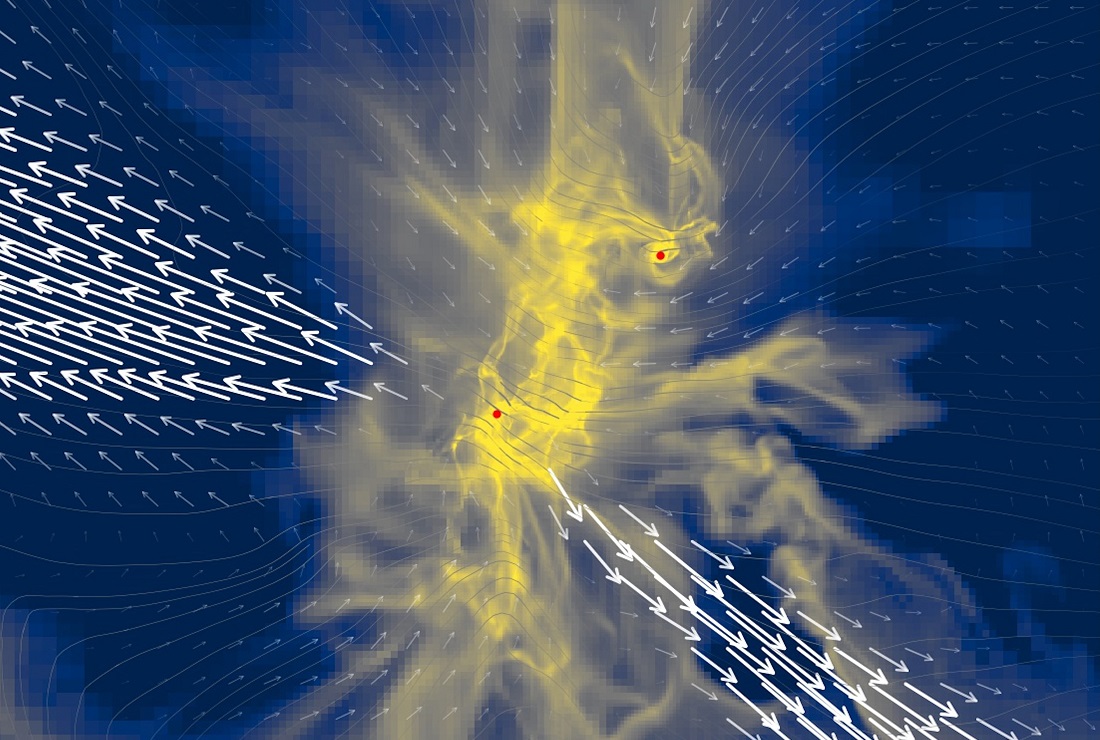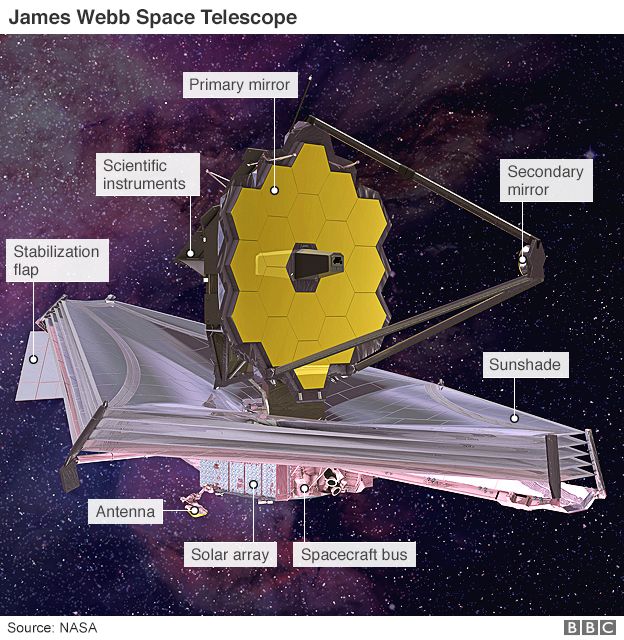From The Niels Bohr Institute [Niels Bohr Institutet] (DK)
at
University of Copenhagen [Københavns Universitet] [UCPH] (DK)
23 May 2022
Contacts:
Jes Kristian Jørgensen
Professor
Astrophysics and Planetary Science
Niels Bohr Institute
University of Copenhagen
jeskj@nbi.ku.dk
+45 35 32 41 86
Rajika L. Kuruwita
Postdoc
Astrophysics and Planetary Science
Niels Bohr Institute
University of Copenhagen
rajika.kuruwita@nbi.ku.dk
+45 35 32 79 98
Maria Hornbek
Journalist
Faculty of Science
University of Copenhagen
maho@science.ku.dk
+45 22 95 42 83
Nearly half of Sun-size stars are binary. According to University of Copenhagen research, planetary systems around binary stars may be very different from those around single stars. This points to new targets in the search for extraterrestrial life forms.
Since the only known planet with life, the Earth, orbits the Sun, planetary systems around stars of similar size are obvious targets for astronomers trying to locate extraterrestrial life. Nearly every second star in that category is a binary star. A new result from research at University of Copenhagen indicate that planetary systems are formed in a very different way around binary stars than around single stars such as the Sun.
“The result is exciting since the search for extraterrestrial life will be equipped with several new, extremely powerful instruments within the coming years. This enhances the significance of understanding how planets are formed around different types of stars. Such results may pinpoint places which would be especially interesting to probe for the existence of life,” says Professor Jes Kristian Jørgensen, Niels Bohr Institute, University of Copenhagen, heading the project.
The results from the project, which also has participation of astronomers from Taiwan and USA, are published in the distinguished journal Nature.
Bursts shape the planetary system
The new discovery has been made based on observations made by the ALMA telescopes in Chile of a young binary star about 1,000 lightyears from Earth.

The binary star system, NGC 1333-IRAS2A, is surrounded by a disc consisting of gas and dust. The observations can only provide researchers with a snapshot from a point in the evolution of the binary star system. However, the team has complemented the observations with computer simulations reaching both backwards and forwards in time.
“The observations allow us to zoom in on the stars and study how dust and gas move towards the disc. The simulations will tell us which physics are at play, and how the stars have evolved up till the snapshot we observe, and their future evolution,” explains Postdoc Rajika L. Kuruwita, Niels Bohr Institute, second author of the Nature article.

Simulation of binary star (from the scientific article by Jørgensen, Kuruwita et al.)
Notably, the movement of gas and dust does not follow a continuous pattern. At some points in time – typically for relatively shorts periods of ten to one hundred years every thousand years – the movement becomes very strong. The binary star becomes ten to one hundred times brighter, until it returns to its regular state.
Presumably, the cyclic pattern can be explained by the duality of the binary star. The two stars encircle each other, and at given intervals their joint gravity will affect the surrounding gas and dust disc in a way which causes huge amounts of material to fall towards the star.
“The falling material will trigger a significant heating. The heat will make the star much brighter than usual,” says Rajika L. Kuruwita, adding:
“These bursts will tear the gas and dust disc apart. While the disc will build up again, the bursts may still influence the structure of the later planetary system.”
Comets carry building blocks for life.
The observed stellar system is still too young for planets to have formed. The team hopes to obtain more observational time at ALMA, allowing to investigate the formation of planetary systems.
Not only planets but also comets will be in focus:
“Comets are likely to play a key role in creating possibilities for life to evolve. Comets often have a high content of ice with presence of organic molecules. It can well be imagined that the organic molecules are preserved in comets during epochs where a planet is barren, and that later comet impacts will introduce the molecules to the planet’s surface,” says Jes Kristian Jørgensen.
Understanding the role of the bursts is important in this context:
“The heating caused by the bursts will trigger evaporation of dust grains and the ice surrounding them. This may alter the chemical composition of the material from which planets are formed.”
Thus, chemistry is a part of the research scope:
“The wavelengths covered by ALMA allow us to see quite complex organic molecules, so molecules with 9-12 atoms and containing carbon. Such molecules can be building blocks for more complex molecules which are key to life as we know it. For example, amino acids which have been found in comets.”
Powerful tools join the search for life in space
ALMA (Atacama Large Millimeter/submillimeter Array) is not a single instrument but 66 telescopes operating in coordination. This allows for a much better resolution than could have been obtained by a single telescope.
Very soon the new James Webb Space Telescope (JWST) will join the search for extraterrestrial life.

Near the end of the decade, JWST will be complemented by the ELT (European Large Telescope) and the extremely powerful SKA (Square Kilometer Array) both planned to begin observing in 2027.





The ELT will with its 39-meter mirror be the biggest optical telescope in the world and will be poised to observe the atmospheric conditions of exoplanets (planets outside the Solar System, ed.). SKA will consist of thousands of telescopes in South Africa and in Australia working in coordination and will have longer wavelengths than ALMA.
”The SKA will allow for observing large organic molecules directly. The James Webb Space Telescope operates in the infrared which is especially well suited for observing molecules in ice. Finally, we continue to have ALMA which is especially well suited for observing molecules in gas form. Combining the different sources will provide a wealth of exciting results,” Jes Kristian Jørgensen concludes.
See the full article here .

five-ways-keep-your-child-safe-school-shootings
The Niels Bohr Institutet (DK) is a research institute of the Københavns Universitet [UCPH] (DK). The research of the institute spans astronomy, geophysics, nanotechnology, particle physics, quantum mechanics and biophysics.
The Institute was founded in 1921, as the Institute for Theoretical Physics of the Københavns Universitet [UCPH] (DK), by the Danish theoretical physicist Niels Bohr, who had been on the staff of the University of Copenhagen since 1914, and who had been lobbying for its creation since his appointment as professor in 1916. On the 80th anniversary of Niels Bohr’s birth – October 7, 1965 – the Institute officially became The Niels Bohr Institutet (DK). Much of its original funding came from the charitable foundation of the Carlsberg brewery, and later from the Rockefeller Foundation.
During the 1920s, and 1930s, the Institute was the centre of the developing disciplines of atomic physics and quantum physics. Physicists from across Europe (and sometimes further abroad) often visited the Institute to confer with Bohr on new theories and discoveries. The Copenhagen interpretation of quantum mechanics is named after work done at the Institute during this time.
On January 1, 1993 the institute was fused with the Astronomic Observatory, the Ørsted Laboratory and the Geophysical Institute. The new resulting institute retained the name Niels Bohr Institutet (DK).
Københavns Universitet (UCPH) (DK) is the oldest university and research institution in Denmark. Founded in 1479 as a studium generale, it is the second oldest institution for higher education in Scandinavia after Uppsala University (1477). The university has 23,473 undergraduate students, 17,398 postgraduate students, 2,968 doctoral students and over 9,000 employees. The university has four campuses located in and around Copenhagen, with the headquarters located in central Copenhagen. Most courses are taught in Danish; however, many courses are also offered in English and a few in German. The university has several thousands of foreign students, about half of whom come from Nordic countries.
The university is a member of the International Alliance of Research Universities (IARU), along with University of Cambridge (UK), Yale University , The Australian National University (AU), and University of California-Berkeley , amongst others. The 2016 Academic Ranking of World Universities ranks the University of Copenhagen as the best university in Scandinavia and 30th in the world, the 2016-2017 Times Higher Education World University Rankings as 120th in the world, and the 2016-2017 QS World University Rankings as 68th in the world. The university has had 9 alumni become Nobel laureates and has produced one Turing Award recipient.



